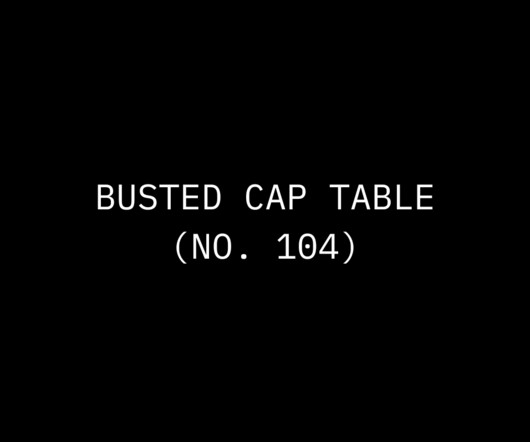Founders – Use Your Down Round To Clean Up Your Cap Table
Feld Thoughts
FEBRUARY 9, 2016
I learned this lesson 127 times between 2000 and 2005. I started investing in 1994 and while there was some bumpiness in 1997 and again in 1999, the real pain happened between 2000 and 2005. I have two simple rules for founders in my head from this experience. Then, if you end up doing a down round, it suddenly matters a lot.


















Let's personalize your content